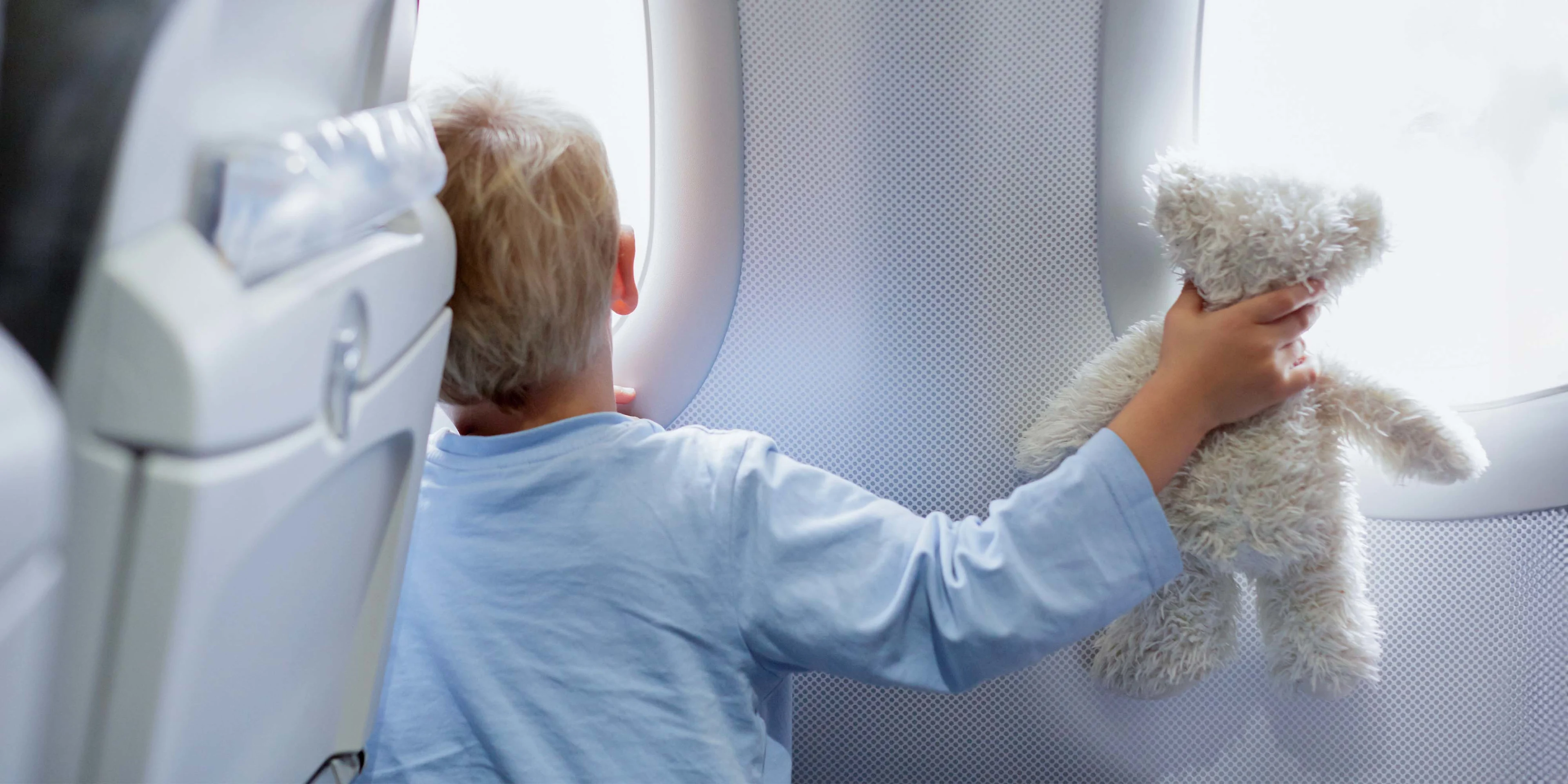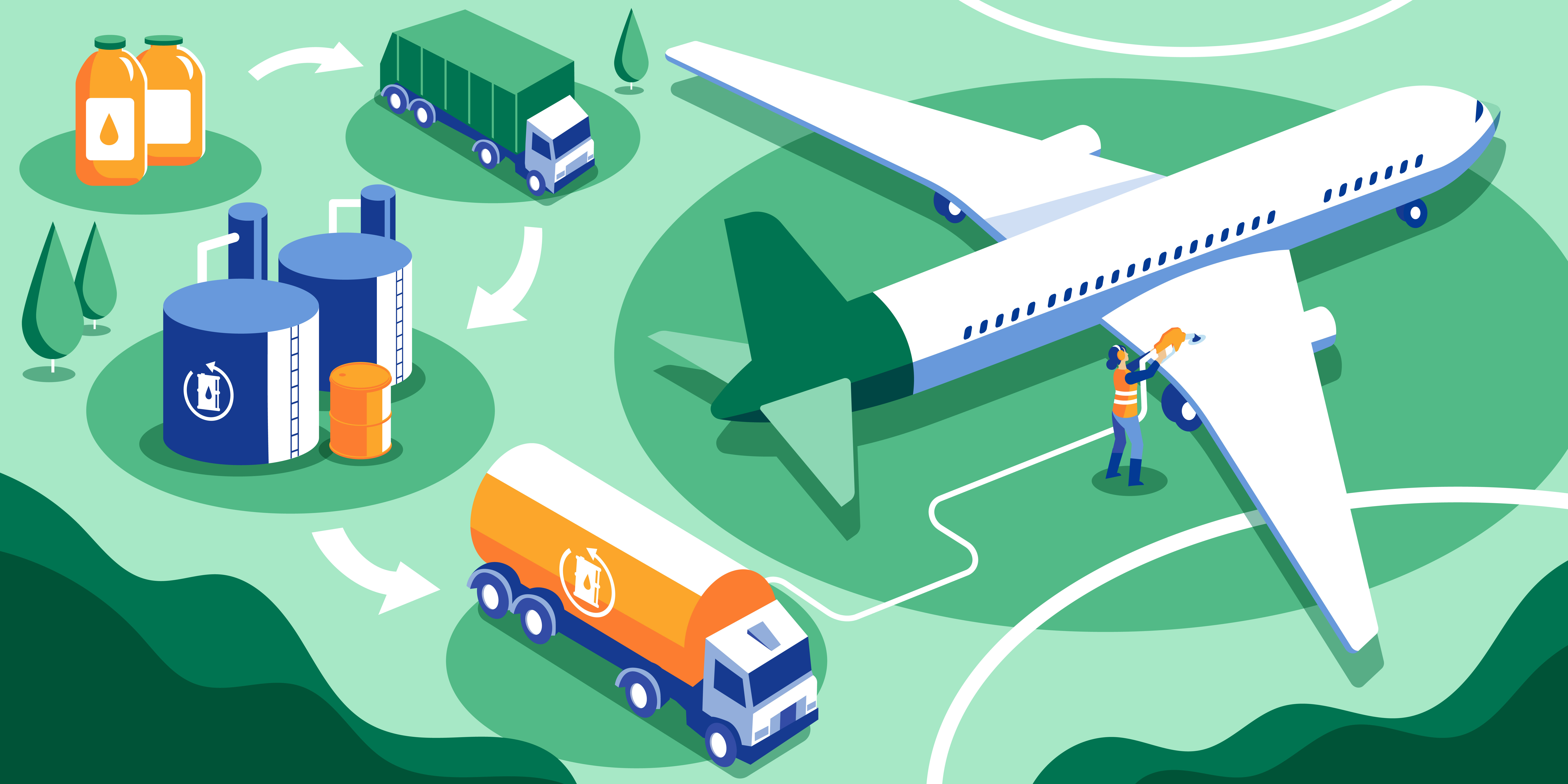
Aviation
7 minute read
Solutions for more sustainable aviation are here – so what’s the hold up?
The airline industry is aiming for net zero carbon emissions by 2050. But solutions to decarbonize aviation are already here, such as sustainable aviation fuel made from 100% renewable raw materials. So what’s stopping us from slashing aviation emissions much sooner?
The aviation industry is estimated to be responsible for 2-3% of global greenhouse gas emissions and, after dipping due to the pandemic, the demand for flights is now on a steep upward curve again. With the urgency to limit global warming and the availability of solutions such as Sustainable Aviation Fuel (SAF), why couldn’t aviation reach net zero sooner than its 2050 target?
Promisingly, since 2022, there have been more than 80 offtake agreements by airlines, with a higher volume of fuel supplied in 2023 than in the previous two years combined.
But, looking at the bigger picture, the proportion of SAF used in aviation is still only a drop in an ocean of fossil kerosene, and opting to fly more sustainably is not yet widely available to consumers.
It seems as if we are in the starting blocks to win the race – but it’s a marathon, not a sprint. Let’s look at the reasons why.
Can the production of SAF be scaled up enough?
With renewable-fuel refineries in Finland, the Netherlands and Singapore, Neste, the world’s leading producer of SAF, will ramp up production to 1.5 million tons (around 1.875 billion liters) annually in 2024 and to 2.2 million tons annually in 2026. While this is great news, even if other suppliers match Neste’s contribution, SAF will at the end of 2024 still only account for around 1% of the 300 million tons of jet fuel consumed by the industry as a whole.
Although this paints a picture of a huge mountain to climb, it is also an incredible turn around in a short period of time, and a precursor of the growth to come.
“A few years ago, we were talking about a non-existent solution, but now we’re looking at one that could provide the aviation industry with 10% of its fuel by 2030,” explains Kristina Öström, Director of Brand, Marketing and CX of Neste’s Renewable Products business unit. “Neste has been making big investments, such as the expansion of our Singapore refinery, which brings our SAF production capability there to one million tons of SAF per annum – a huge increase in capacity.”
Öström also points out that fossil and renewable fuels are now in the spotlight in a way that they haven’t been before: “Historically fuel has been a low-interest product category. Now that the focus has shifted to sustainability and tackling climate change, and supportive regulation is emerging in multiple markets, there has been renewed interest in biofuels that provide a more sustainable alternative to fossil fuels. The challenge now is how to educate and inspire airlines and companies to take their first steps in using SAF as a means of reducing air-travel-related emissions.”
But if the demand keeps growing, can the production of SAF match it?
“On the supply side, most of the SAF we procure has been derived from used cooking oil and fats,” says Andrea Ayala, Senior Manager of Environmental Sustainability at United Airlines. “As these are finite resources, there simply isn’t the capacity to deliver enough fuel.”
The long-term solution is to continue research and innovation into more streams of sustainable raw materials – but this takes time. “We can increase supply by deriving SAF from new feedstocks,” Ayala continues, “but it will take several years before these pathways reach commercial viability.”
Expanding the pool of raw materials and developing technologies to introduce new lower-quality waste and residues is something Neste is continuously working on.
“Future raw materials, such as algae or lignocellulosic waste and residues, hold the potential to broaden and scale sustainable aviation fuel production,” Öström adds. She also highlights Power-to-X based solutions, such as e-fuels, as a way to expand the more sustainable transport fuel pool beyond biomass-based renewable fuels.

Walking the walk – the shared journey to more sustainable aviation
The transformation of aviation to net-zero emissions is an effort that requires a large number of stakeholders to pull together in the same direction. This means not just making pledges but also taking action to apply all the solutions available to us.
“I don’t believe there’s a quick fix here because the entire aviation ecosystem – airlines, airports, fuel suppliers, distributors, regulators and travelers – needs to work together to accelerate the adoption of SAF,” Öström says. ”It also includes other measures such as upgrading fleets with more economical aircraft, using new technologies like electric or hydrogen-powered flights, and incorporating more lightweight materials.”
While many are talking the talk by announcing future capabilities, fewer are walking the walk. “We need everybody to start walking the walk,” Öström adds, “as delivering a more sustainable aviation industry is not something Neste, or anyone else, can manage alone. We need investment by the entire industry to help tackle the issue of climate change, together with all stakeholders.”
The power of consumers
Consumers increasingly demand sustainability from businesses they interact with. But they, too, need to walk the walk and take the responsibility for their own emissions – and this starts by being willing to pay a little more for their travel. The positive side effect is that by doing so, they will help drive demand for more sustainable flights.
“It’s really important that people who fly should contribute to making their flight more sustainable,” Öström says. ”The options are available – it only costs a few dollars to add SAF to your booking, the benefits far outweigh the costs."
Airlines can further incentivize this by making it easier for consumers to understand and make those sustainable choices at the point of booking.
“Leisure passengers who fly with United want affordable low-carbon travel, so we include emissions estimates for every travel itinerary during the booking process,” Ayala explains. “We’ve also created a sustainable flight fund whereby the customer can contribute up to seven dollars per flight towards SAF. The first 10,000 people who contributed to the initiative received airmiles in return for their support. We even try to simplify the language so that their carbon saving becomes more relevant and tangible. Most people can’t visualize what a ton of CO2 looks like, but they can relate the emissions reductions to an equivalent car journey for example.”
The role of regulation
Governments and regulatory bodies can play a crucial role in accelerating the production of SAF. Supportive legislation in the form of mandates or incentives to use SAF, will create security of demand. This will attract investment in SAF production capacity and the associated supply chains.
On the upside, targets are being set across the globe: the EU, for example, introduced regulations that include mandates to use SAF starting at 2% from 2025 and increasing to 6% by 2030; the US has adopted incentives; and governments in the Asia-Pacific region are also working on regulatory support with for example Singapore announcing a 1% SAF target in 2026.
Hold on – aviation’s transformation is underway
There is no single silver bullet, but there is a groundswell of change across the aviation industry with more and more airlines setting the wheels in motion in various ways to become more sustainable. For example, EasyJet have decided to focus on reducing emissions rather than pursuing a carbon-offsetting program; KLM have started adding SAF to flights leaving Amsterdam; and Lufthansa have committed to promoting sustainable fuels, as well as using biomimetic technology on their fleet to reduce friction and increase lift; British Airways is investing in reducing waste and developing renewable aviation fuel; while Singapore Airlines has introduced fuel-efficiency technology to help reduce CO2 emissions per flight per person by customizing speeds during the climb-out phase; and United is updating its fleet, with newer aircraft improving efficiency by up to 15% per journey.
So while there isn’t a hold up as such, as a lot of positive progress is being made to make aviation more sustainable, we have to accept that it will take time for the many pieces of the puzzle to come together, with everyone from airlines and governments to corporations and individuals playing their part.





